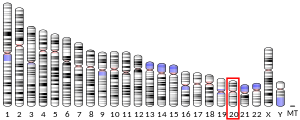TMEM239
| TMEM239 | |||||||||||||||||||||||||||||||||||||||||||||||||||
|---|---|---|---|---|---|---|---|---|---|---|---|---|---|---|---|---|---|---|---|---|---|---|---|---|---|---|---|---|---|---|---|---|---|---|---|---|---|---|---|---|---|---|---|---|---|---|---|---|---|---|---|
| Identifiers | |||||||||||||||||||||||||||||||||||||||||||||||||||
| Aliases | TMEM239, transmembrane protein 239 | ||||||||||||||||||||||||||||||||||||||||||||||||||
| External IDs | MGI: 1914016; HomoloGene: 122214; GeneCards: TMEM239; OMA:TMEM239 - orthologs | ||||||||||||||||||||||||||||||||||||||||||||||||||
| |||||||||||||||||||||||||||||||||||||||||||||||||||
| |||||||||||||||||||||||||||||||||||||||||||||||||||
| |||||||||||||||||||||||||||||||||||||||||||||||||||
| |||||||||||||||||||||||||||||||||||||||||||||||||||
| Wikidata | |||||||||||||||||||||||||||||||||||||||||||||||||||
| |||||||||||||||||||||||||||||||||||||||||||||||||||
Within mammalia, TMEM239 orthologs are found in organisms belonging to eutheria and metatheria, but not prototheria. No human paralogs for TMEM239 have been identified.
Expression
[edit]Based on human expressed sequence tag (EST) profiles, TMEM239 appears to be expressed in the testis and the brain.[5] According to PaxDb, the abundance of TMEM239 falls within the bottom 10% relative to all other proteins in both mice and humans.[6] Overall, expression of TMEM239 is limited. TMEM239 appears to be expressed at moderate levels in the testes, with low expression in a variety of other tissues, including the brain and submaxillary gland.
Interactions
[edit]TMEM239 protein interactions appear to be implicated in cell signaling, membrane transport and immunology. Human T-cell leukemia virus type-1 Protein TAX-1 (TAX) and Beta-2-microglobulin (B2M) were found to interact with TMEM239 through a host-pathogen yeast two hybrid screen.[7]
Additional TMEM239 protein interactions were identified through a human interactome mapping project. Synthenein-1 (SDCBP) is involved in the trafficking of transmembrane proteins, in addition to neuro and immunomodulation, exosome biogenesis and tumorigenesis.[8] SDCBP is regulated by TGFB1-mediated SMAD2/3. A number of other cell signaling proteins physically associated with TMEM239, including Cyclic AMP-dependent transcription factor (ATF-7), FYVE, RhoGEF and PH domain-containing protein 2 (FGD2) and Syndecan binding protein (SDCBP).
The Golgi SNAP receptor complex member 1 (GOS1) was found to associate with TMEM239.[9] A member of the super-family of proteins called t-SNAREs, GOS1 mediates transport from the ER to the Golgi apparatus.[10] Lastly, the protein Alpha-N-methyltransferease (TAE1) was found to interact with TMEM239. TAE1 catalyzes the methylation of alpha-amino groups of Alanine or Serine residues in [Ala/Ser]-Pro-Lys motifs and Pro-Pro-Lys motifs. TAE1 is also responsible for methylating a number of ribosomal proteins.[11]
Clinical significance
[edit]SNP rs7360412, located in the 3’UTR of TMEM239, was identified in a genome-wide association study of quantitative phenotypes for bipolar disorder as a top marker for fractional anisotropy.[12] In this context, fractional anisotropy, as detected by diffusion tensor imaging, was used to assess white matter integrity. White matter integrity is highly heritable and reduced in both bipolar patients and their unaffected relatives.
RNA-seq was used to analyze the transcriptomes of human and Leishmania primary cutaneous lesions, in order to understand differences in host and parasitic factors influencing the progression of Localized Cutaneous Leishmaniasis (LCL) to Mucosal Leishmaniasis (ML).[13] Decreased expression of TMEM239 in a primary cutaneous lesions indicates a higher probability of ML development.
References
[edit]- ^ a b c GRCh38: Ensembl release 89: ENSG00000198326 – Ensembl, May 2017
- ^ a b c GRCm38: Ensembl release 89: ENSMUSG00000049692 – Ensembl, May 2017
- ^ "Human PubMed Reference:". National Center for Biotechnology Information, U.S. National Library of Medicine.
- ^ "Mouse PubMed Reference:". National Center for Biotechnology Information, U.S. National Library of Medicine.
- ^ "Transmembrane protein 239 (TMEM239)". www.ncbi.nlm.nih.gov. Retrieved 2016-02-27.
- ^ "PaxDb". pax-db.org. Retrieved 2016-04-25.
- ^ Simonis N, Rual JF, Lemmens I, Boxus M, Hirozane-Kishikawa T, Gatot JS, Dricot A, Hao T, Vertommen D, Legros S, Daakour S, Klitgord N, Martin M, Willaert JF, Dequiedt F, Navratil V, Cusick ME, Burny A, Van Lint C, Hill DE, Tavernier J, Kettmann R, Vidal M, Twizere JC (2012-03-29). "Host-pathogen interactome mapping for HTLV-1 and -2 retroviruses". Retrovirology. 9 (1): 26. doi:10.1186/1742-4690-9-26. PMC 3351729. PMID 22458338.
- ^ "SDCBP - Syntenin-1 - Homo sapiens (Human) - SDCBP gene & protein". www.uniprot.org. Retrieved 2016-04-25.
- ^ Zhong Q, Pevzner SJ, Hao T, Wang Y, Mosca R, Menche J, Taipale M, Taşan M, Fan C, Yang X, Haley P, Murray RR, Mer F, Gebreab F, Tam S, MacWilliams A, Dricot A, Reichert P, Santhanam B, Ghamsari L, Calderwood MA, Rolland T, Charloteaux B, Lindquist S, Barabási AL, Hill DE, Aloy P, Cusick ME, Xia Y, Roth FP, Vidal M (2016-04-01). "An inter-species protein-protein interaction network across vast evolutionary distance". Molecular Systems Biology. 12 (4): 865. doi:10.15252/msb.20156484. PMC 4848758. PMID 27107014.
- ^ "GOS1 - Golgi SNAP receptor complex member 1 - Saccharomyces cerevisiae (strain ATCC 204508 / S288c) (Baker's yeast) - GOS1 gene & protein". www.uniprot.org. Retrieved 2016-04-25.
- ^ "TAE1 - Alpha N-terminal protein methyltransferase 1 - Saccharomyces cerevisiae (strain ATCC 204508 / S288c) (Baker's yeast) - TAE1 gene & protein". www.uniprot.org. Retrieved 2016-04-25.
- ^ Sprooten E, Fleming KM, Thomson PA, Bastin ME, Whalley HC, Hall J, Sussmann JE, McKirdy J, Blackwood D, Lawrie SM, McIntosh AM (April 2013). "White matter integrity as an intermediate phenotype: exploratory genome-wide association analysis in individuals at high risk of bipolar disorder". Psychiatry Research. 206 (2–3): 223–31. doi:10.1016/j.psychres.2012.11.002. PMID 23218918. S2CID 22967553.
- ^ Maretti-Mira AC, Bittner J, Oliveira-Neto MP, Liu M, Kang D, Li H, Pirmez C, Craft N (2012-09-13). "Transcriptome patterns from primary cutaneous Leishmania braziliensis infections associate with eventual development of mucosal disease in humans". PLOS Neglected Tropical Diseases. 6 (9): e1816. doi:10.1371/journal.pntd.0001816. PMC 3441406. PMID 23029578.




